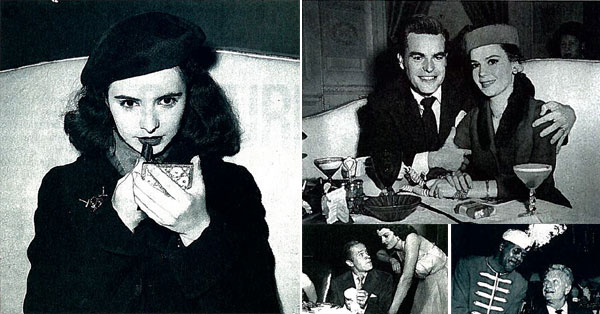
Clockwise, left to right: Margaret O'Brien; Robert Wagner and Natalie Wood; Eddie Albert; Bob Hope and Jane Russell
Rich Melman, who has built a career creating of-the-moment restaurants, first walked into the Ambassador East's Pump Room one night in 1975. “Good evening, sir,” said maitre d’ Arturo Petterino. afraid that we do not allow blue jeans.”
“Thank you," said Melman. “I'll be back."
“Of course," said Arturo, turning his attention elsewhere.
A better-dressed Melman came back, of course, a few months later. He and his partner Jerry Orzoff sat in Booth One for the first time. They now owned it—and the whole joint, having signed a ten-year lease with two five-year options. They ate rack of lamb, shrimp de jonghe, vichyssoise, and a number of other soups. When finished, they paid their $54 bill and set about the business of transforming the Pump Room.
They sold off everything—the plumed satin turbans worn by the coffee servers, the swords upon which meals flamed (“They’ll serve everything on a flaming sword except the check,” Jack Benny once said), glasses, crystal sconces from the ladies’ room, crockery, carpets, chairs, a vinyl kiddie seat, the white baby grand . . . even Booth One.
The Pump Room was, if not quite reborn, at least given a face-lift that made it all but unrecognizable to old friends.
So new friends came. And this fall, the Pump Room celebrated its 50th birthday, surrounded by all manner of pomp and au coumnt circumstance, including a television special filmed one black-tied and bejeweled mid-October evening to be aired in December.
As always if not as much, the Pump Room remains the sort of place that draws the celebrated and self-congratulatory. A seat in Booth One, which is not where the old Booth One used to be, continues to impart status of a sort, a transient famekiss more important, it can be argued, than receiving the city’s key but not as dear as 40-yard-line Bears seats.
The Pump Room's greatest glory, though, lies in its past. It is locked into the framed celebrity photos that fill the walls of the room’s entrance, and in the thousands of words those pictures speak: of Margaret O’Brien’s first taste of lipstick, of Barrymore blasted, Reagan and Wyman holding hands, Monroe, Bogie, and Gable.
It is locked into the memories of that fading group who knew it when . . . when that playful visionary Ernie Byfield, who wanted a “celebrity palace" and, taking his design cues from the 18th-century British watering hole and gambling spa at Bath, created that and more—a room at once outrageous and attractive. An absurd delight.
And in so doing, he made a sort of magic that lived beyond his time (he died in 1950) and continues in mysterious ways to touch the lives of those who come to visit.
The person it touched most was May Darling.
When she first arrived, one Saturday night shortly after World War Two, no one noticed. But by the 1970s, everyone did.
What an entrance she would make. She would change her clothes in the ladies’ room of the Ambassador West and at the stroke of midnight walk into the room. The diners and drinkers would burst into applause. The maitre d’ would bow with campy formality. She and George Wriborg, the feisty white-haired former woodsman and poet who became her steady in 1963, were led to their table near the bandstand and Stanley Paul’s orchestra would break into “Hello Dolly," followed by “Second Hand Rose."
She dressed in pink. In blue. A Harlow hairdo. Rhinestone collars from chin to chest. Feathers in her hair. Or her Christmas dress of red paillettes and green feathers with faglfre green holly around the neck and hem. Heavy make-up; a rhinestone beauty mark pasted to her face.
She danced the Watusi and the frug, blowing kisses to the Pump Room matrons. The soles of her shoes had been painted with nail polish, the better to glide smoothly. She ate the same thing every time she visited—a chicken sandwich.
“With a drink or two, our tab approaches ten dollars," Wriborg said. “But it’s worth every penny. When May and I are out there on the dance floor, the whole world melts away."
The dreams of a Saturday night. When Darling died in 1971 she had spent more than 1,300 consecutive Saturday nights at the Pump Room, knowing better than most the magic of the room and the joys of a world melted away.


